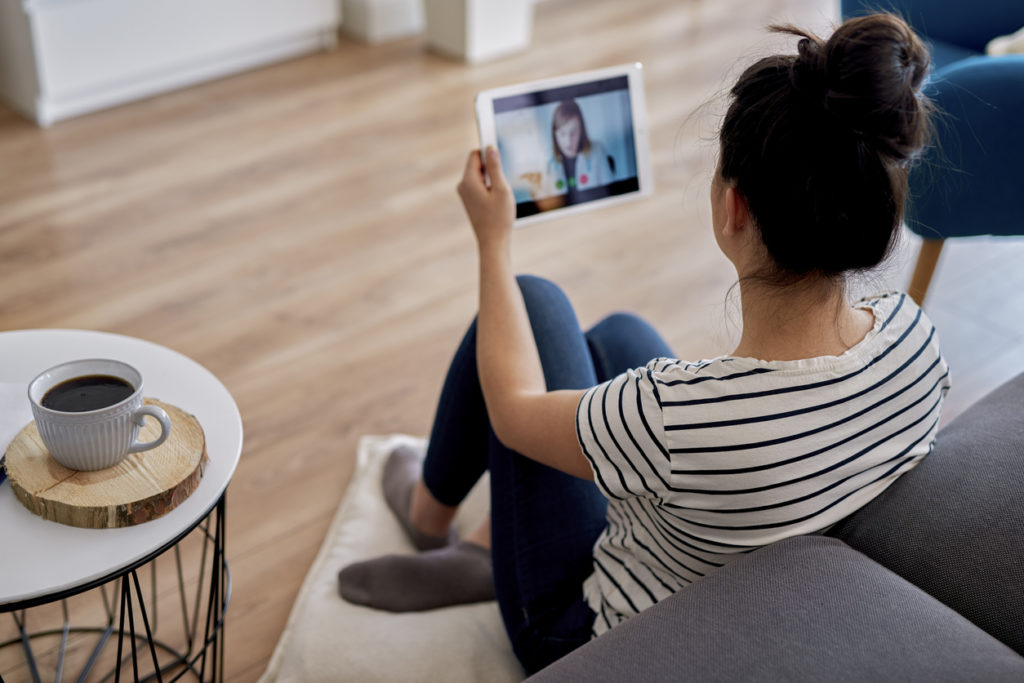The COVID-19 pandemic has disrupted all of our lives. Because of patients’ inability to come into the office, doctors and patients alike have become more reliant on telemedicine than ever. During a course at AAO 2020 Virtual, the AAO Ethics Committee offered an on-demand session on the topic of Telehealth in Ophthalmology: Ethical Considerations in Virtual Patient Care, led by the committee’s current chair Dr. Ron W Pelton. Let’s review what Dr. Pelton and his invited speakers say are the most important ethical considerations in telehealth today.
Remote Care During the Pandemic
“Remote care is critical to the safe management in the pandemic — ensuring uninterrupted care for 100 million Americans with chronic conditions who are unable to travel to a physician’s office,” said Dr. Pelton as he introduced the unique circumstances we are experiencing during the coronavirus pandemic.
He went on to outline which technologies are included under the umbrella of telemedicine. These include real-time audio and video communication tools; store-and-forward technologies that collect images and data to be transmitted and interpreted later; virtual check-ins via patient portals; and remote patient-monitoring tools such as glucose meters, blood pressure meters, and other wearable devices that communicate biometric data.
The objective of the discussion, he explained, would be to introduce important ethical considerations that will help doctors follow best practices in the use of this technology, while driving the best possible outcomes for physicians and patients.
Competence in Ophthalmology
The next speaker was Ethics Committee Member Dr. John Irvine, who introduced the first rule of the Academy’s rule of ethics: Physicians should perform only procedures in which they are competent by virtue of training or assistance. Thus, it is every ophthalmologist’s responsibility to assess their ability to provide the care needed via telemedicine and inform the patient of any limitations.
He explained that competence in telemedicine means not just knowing how to use a platform — but how to use it effectively.
He offered guidance for optimizing the virtual environment for the patient, including tips such as slow hand gestures, proper lighting and background, and providing the patient with all the necessary information to carry out the meeting (technologically speaking).
Informed Consent

Following Dr. Irvine was Vice Chair of the Ethics Committee Dr. Carla Siegfried, with an explanation of informed consent in the context of telemedicine, which she described as, “The process by which the ophthalmologist educates a patient concerning the risks, benefits and alternatives.”
She elaborated: “Telehealth may not be appropriate for all conditions, acute or chronic, that require in-person physical examination or other testing, and that this is an important specific disclosure for telehealth.”
Avoiding Ethical Dilemmas that Arise from Conflicts of Interest
Dr. Brian Welcome chimed in to warn that any patient seen via telehealth platforms must be informed of benefits to physicians, such as discounts or investment opportunities. These conflicts of interest, if not handled correctly, could result in a breach of the AAO code of ethics.
Ensure that any business arrangements do not require the physicians to make referrals to the entity or otherwise generate revenue as a condition of participation, and do not prohibit physicians from participating in or referring patients to competing facilities.
Confidentiality
“This is perhaps the greatest challenge concerning the use of telemedicine: The potential for loss of privacy and the risk to patient confidentiality,” said Dr. Jessica Ciralsky
She went over HIPAA guidelines for ensuring proper storage and transmission of patients’ personal information. The speaker also advised that it is a physician’s responsibility to inform patients that telehealth technologies for communication, such as Skype or Zoom, may not have the privacy safeguards and securities that are required of more formal telehealth platforms, but to remind them that you will use every reasonable precaution to keep their information private.
Continuity of Care
Dr. Hardeep Dhindsa then advised that ophthalmologists who participate in telemedicine have an obligation to promote continuity of care and advise patients on next steps after the consultation. Expounding upon this, he stated that physicians need to let patients know whether the telemedicine visit is going to be sufficient and whether they will need to come in for a traditional appointment.
Preservation of Data
On the topic of data preservation, Dr. Russel Van Gelder reminded attendees that a physician’s responsibility to make a detailed record of each appointment extends to telemedicine as well. Not only is this necessary for providing adequate treatment, it’s important for passing patient information to other healthcare professionals — and in case of legal defense in any malpractice accusation. He recommended maintaining records longer than state laws may demand.
Legality and Final Thoughts
Dr. Pauline Merrill closed the session by outlining legal concerns regarding consent, patient privacy and conflict of interest. She summarized the aforementioned guidance on documentation and technological competence and made sure to refer back to the importance of ethical consideration during all of these processes.
“Wherever the patient may be,” Dr. Merrill recapped, “telemedicine allows the possibility of delivering eye care even when an in-person visit is not feasible. But no matter where you or the patient are located, always remember it is our ethical responsibility to always act in the best interest of the patient.”
Editor’s Note: AAO Virtual 2020 took place from Nov. 13 to 15, 2020. Reporting for this story also took place during AAO Virtual.



